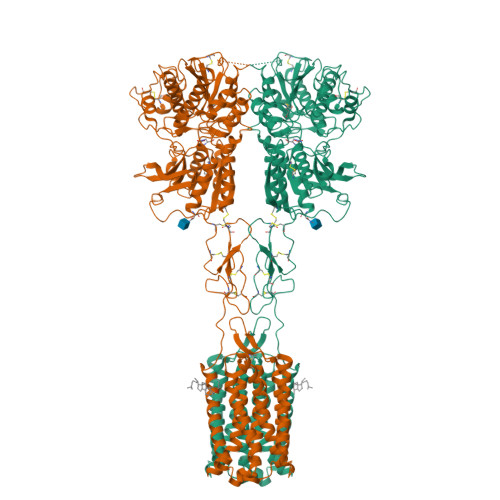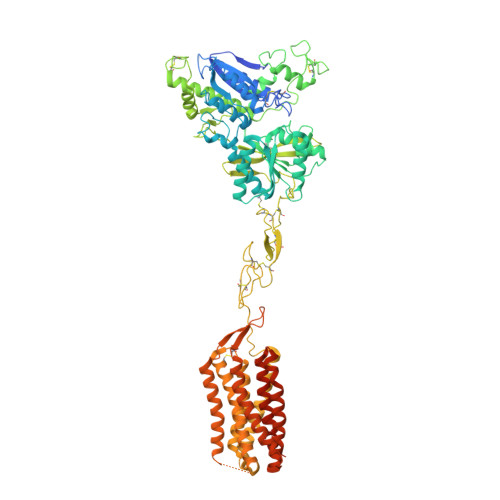Agonists and allosteric modulators promote signaling from different metabotropic glutamate receptor 5 conformations.
Nasrallah, C., Cannone, G., Briot, J., Rottier, K., Berizzi, A.E., Huang, C.Y., Quast, R.B., Hoh, F., Baneres, J.L., Malhaire, F., Berto, L., Dumazer, A., Font-Ingles, J., Gomez-Santacana, X., Catena, J., Kniazeff, J., Goudet, C., Llebaria, A., Pin, J.P., Vinothkumar, K.R., Lebon, G.(2021) Cell Rep 36: 109648-109648
- PubMed: 34469715
- DOI: https://doi.org/10.1016/j.celrep.2021.109648
- Primary Citation of Related Structures:
7FD8, 7FD9, 7P2L - PubMed Abstract:
Metabotropic glutamate receptors (mGluRs) are dimeric G-protein-coupled receptors activated by the main excitatory neurotransmitter, L-glutamate. mGluR activation by agonists binding in the venus flytrap domain is regulated by positive (PAM) or negative (NAM) allosteric modulators binding to the 7-transmembrane domain (7TM). We report the cryo-electron microscopy structures of fully inactive and intermediate-active conformations of mGlu 5 receptor bound to an antagonist and a NAM or an agonist and a PAM, respectively, as well as the crystal structure of the 7TM bound to a photoswitchable NAM. The agonist induces a large movement between the subunits, bringing the 7TMs together and stabilizing a 7TM conformation structurally similar to the inactive state. Using functional approaches, we demonstrate that the PAM stabilizes a 7TM active conformation independent of the conformational changes induced by agonists, representing an alternative mode of mGlu activation. These findings provide a structural basis for different mGluR activation modes.
Organizational Affiliation:
IGF, Université de Montpellier, CNRS, INSERM, 34094 Montpellier, France.



















